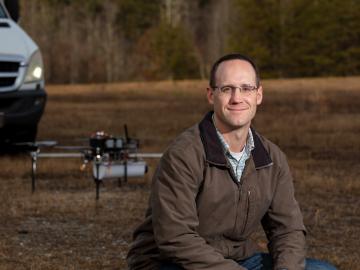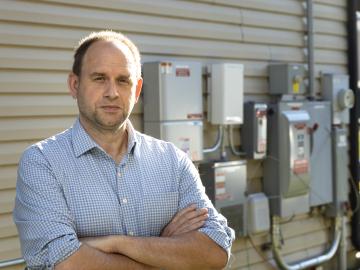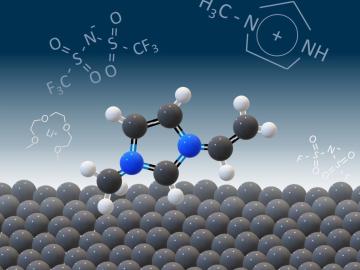
Filter News
Area of Research
- Advanced Manufacturing (2)
- Biology and Environment (33)
- Computational Engineering (1)
- Computer Science (4)
- Electricity and Smart Grid (1)
- Energy Science (68)
- Fusion and Fission (4)
- Isotopes (22)
- Materials (54)
- Materials for Computing (8)
- National Security (29)
- Neutron Science (20)
- Nuclear Science and Technology (4)
- Quantum information Science (5)
- Supercomputing (92)
News Type
News Topics
- (-) Clean Water (18)
- (-) Cybersecurity (31)
- (-) Energy Storage (75)
- (-) Exascale Computing (64)
- (-) Isotopes (53)
- (-) Machine Learning (50)
- (-) Microelectronics (4)
- (-) Quantum Science (79)
- (-) Summit (62)
- 3-D Printing/Advanced Manufacturing (104)
- Advanced Reactors (24)
- Artificial Intelligence (112)
- Big Data (53)
- Bioenergy (93)
- Biology (106)
- Biomedical (59)
- Biotechnology (35)
- Buildings (45)
- Chemical Sciences (70)
- Composites (23)
- Computer Science (174)
- Coronavirus (36)
- Critical Materials (16)
- Education (5)
- Element Discovery (1)
- Emergency (3)
- Environment (154)
- Fossil Energy (7)
- Frontier (60)
- Fusion (54)
- Grid (48)
- High-Performance Computing (113)
- Hydropower (6)
- ITER (6)
- Materials (111)
- Materials Science (111)
- Mathematics (8)
- Mercury (9)
- Microscopy (40)
- Molten Salt (5)
- Nanotechnology (46)
- National Security (78)
- Neutron Science (136)
- Nuclear Energy (94)
- Partnerships (67)
- Physics (60)
- Polymers (22)
- Quantum Computing (48)
- Security (28)
- Simulation (52)
- Software (1)
- Space Exploration (16)
- Statistics (3)
- Transportation (56)
Media Contacts

Four research teams from the Department of Energy’s Oak Ridge National Laboratory and their technologies have received 2020 R&D 100 Awards.

Scientists at ORNL and the University of Nebraska have developed an easier way to generate electrons for nanoscale imaging and sensing, providing a useful new tool for material science, bioimaging and fundamental quantum research.

Radioactive isotopes power some of NASA’s best-known spacecraft. But predicting how radiation emitted from these isotopes might affect nearby materials is tricky

Researchers at ORNL used quantum optics to advance state-of-the-art microscopy and illuminate a path to detecting material properties with greater sensitivity than is possible with traditional tools.

The Department of Energy has selected Oak Ridge National Laboratory to lead a collaboration charged with developing quantum technologies that will usher in a new era of innovation.

A team led by Oak Ridge National Laboratory developed a novel, integrated approach to track energy-transporting ions within an ultra-thin material, which could unlock its energy storage potential leading toward faster charging, longer-lasting devices.

Oak Ridge National Laboratory researchers have developed artificial intelligence software for powder bed 3D printers that assesses the quality of parts in real time, without the need for expensive characterization equipment.

Horizon31, LLC has exclusively licensed a novel communication system that allows users to reliably operate unmanned vehicles such as drones from anywhere in the world using only an internet connection.

Joe Hagerman, ORNL research lead for buildings integration and controls, understands the impact building technology innovations can have during times of crisis. Over a decade ago, he found himself in the middle of one of the most devastating natural disasters of the century, Hurricane Katrina.

Scientists seeking ways to improve a battery’s ability to hold a charge longer, using advanced materials that are safe, stable and efficient, have determined that the materials themselves are only part of the solution.


